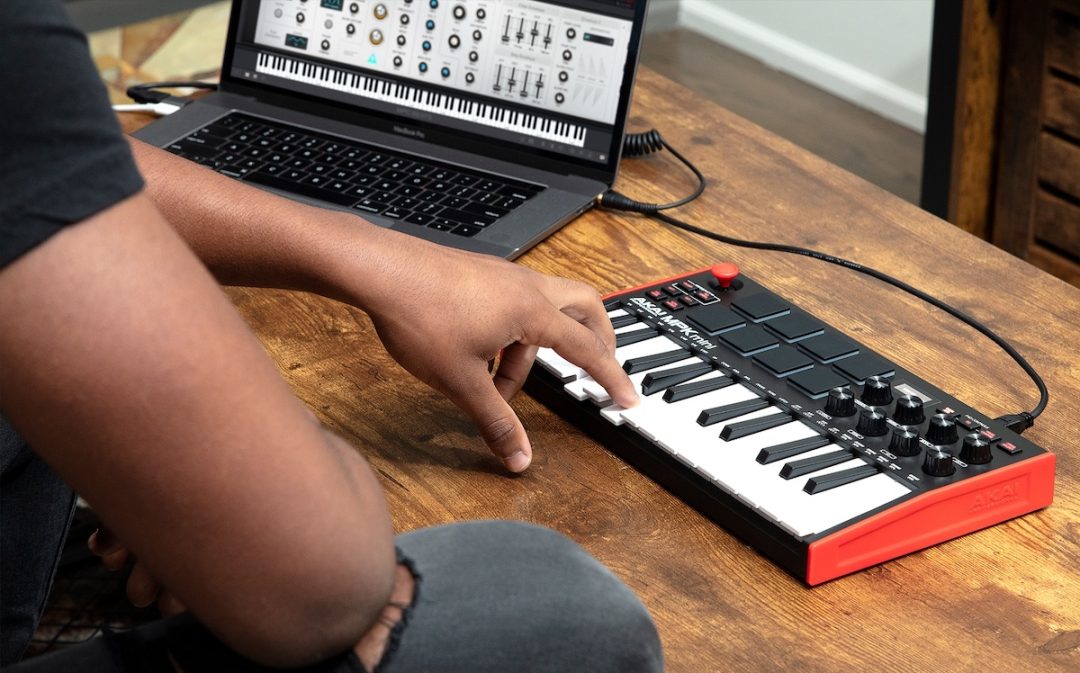The Akai MPK Mini Mk3 is one of the most popular choices for a quality, travel-size MIDI controller. There’s an abundance of options available in the 25-key category, but Akai remains a standout.
Akai Continues to Build on Its Legacy with the Mini Mk3
Not that they need to! Akai has been an industry-leading hi-fi and electronics brand since its founding in 1946. When the instruments division, Akai Professional, opened in 1984, the company started producing keyboards and eventually the famed MPC series samplers/sequencers.
Today, Akai Professional continues to develop the MPC line, alongside keyboards, controllers, drum machines, and more. Speaking of controllers, the legendary MPK Mini is one of the best-selling MIDI controllers ever. If you’re not familiar, the basis of the MPK Mini is a 25-key keyboard, eight MPC-style pads, eight knobs to adjust mapped parameters, and an iconic modulation joystick.
With the Mini Mk3, Akai managed to take an already fantastic piece of gear and improve it. And let’s be honest—it’s quite welcome when a brand truly refines their work rather than just renaming it or giving it fresh cosmetics!
What’s New in the Akai MPK Mini Mk3?
Hardware
One of the more obvious hardware additions is an OLED display showing various data like arpeggiator settings and more. It’s neat, if not a bit underwhelming, but at this price it’s definitely not a major disappointment. Overall, the layout remains similar to the Mk2.
Infinity Pots
A super cool addition to the MPK Mini are what Akai calls Endless Knobs. In prior versions, the eight encoders could only travel so far in either direction, making parameter adjustment a little clunky. The Mk3 new rotary knobs spin infinitely so you can make fine adjustments easier than ever before.
Updated Keybed
Perhaps one of the biggest changes to the MPK Mini is the new and improved keybed utilizing Akai’s Dynamic Gen 2 technology. Mini keys are totally hit or miss for most people. More often than not, they tend to feel cheap and unresponsive—not like a proper keyboard at all. Some of that is expected in something miniaturized and very affordable, though.
That said, the Akai MPK Mini Mk3’s keybed feels pretty awesome for something this small. It’s more responsive than it’s ever been, and the travel feels smoother and more refined. The keys are also velocity-sensitive to still capture a nuanced performance, even if the keys are not quite like a proper keyboard or piano.
A Newer, Sleek Design
While the overall design isn’t drastically different from previous iterations, the Mk3 has nice, clean lines and an overall “expensive” look and feel. One nice design improvement is moving the USB port from the side of the controller to the back; it’s a small move, but it could lead to potentially cleaner cabling. The presentation is easy and elegant—just a touch above previous versions.
Here’s a final note: whoever at Akai decided to illuminate the text on the MPK made a phenomenal decision. It’s such a minute detail, but undoubtedly a step up.
How Does It Stack Up Against Previous Akai MPK Mini Models? (Is It Worth the Upgrade?)
If you’re currently sitting on a Mk2—and you’re happy with it—then you’re probably not clamoring to buy another. The Mk3 improved a lot over the Mk2, but it’s really only worth it if you really dislike what the earlier model has going on. If a better keybed, better pads, and better rotary knobs make sense to you, then the Akai MPK Mini Mk3 is absolutely worth it—even if the Mk2 still has a lot of good going for it.
